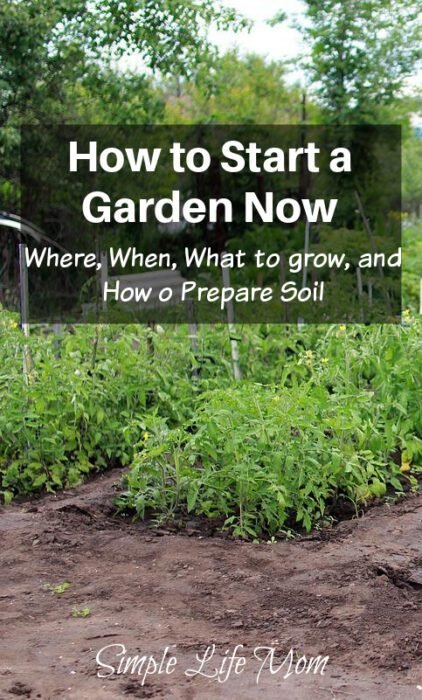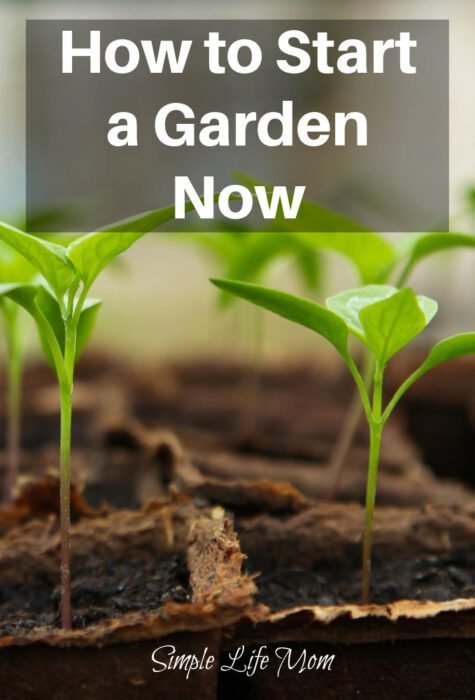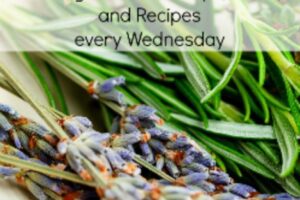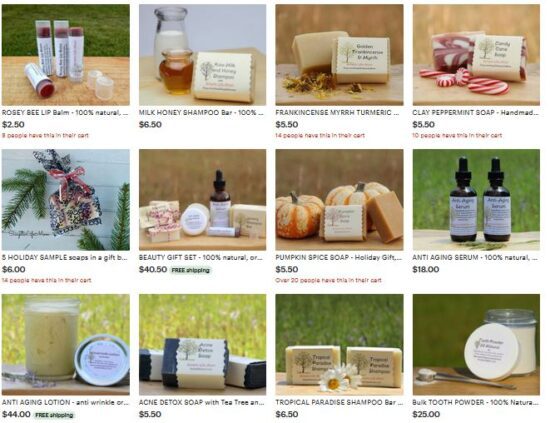If you haven’t started a garden, then it’s a great idea to start now. Diesel prices have literally doubled in one year. This means that trucks needing to transport food must be double the amount. This will transfer to food prices. We’ll continue to see prices increase across the board. Learning how to start a garden can only help as you develop age old skills that will benefit your entire family and possibly your community.

I’ve had quite a few years of experience and I’d love to share with you how to start a garden, as well as where to put it and tips for when to plant and what to plant.
I started an Emergency Preparedness Series. Part of that spoke about types of preparedness. There is short term emergency preparedness, like if you lost power for a few hours during the winter or have a water break. but there is also more long term and permanent preparedness that focuses on helping you become resourceful and capable so that you are less reliant on outside sources for your warmth, food, energy, and safety. That is a HUGE topic, but I’m happy to walk with you a few steps at a time.
Previous articles in the Perparedness Series:
- Types of Preparedness
- Creating an Emergency Food Supply (plus a printable checklist)
- Emergency Water Purification and Storage
A Great Resource
Remember that you do not need to become 100% self reliant or self reliant all at once. Most people take 10-20 years at least to move to a more productive lifestyle.
If you want to move faster, then I understand that for sure. Check out Melissa K Norris and her Garden planning system. I’m not an affiliate of hers, I just think she’s a wonderful gardener. While I focus on soapmaking and things around the home, she focuses on gardening and has a wonderful system and is a great resource.
How to Start a Garden
Starting a garden is a big topic, but we’ll break it down into steps.
You’ll want to think about:
- what you want to plant: vegetables, fruit, herbs, a bit of each?
- the space you have available: will you plant in pots, a raised bed, large garden beds?
- when you need to start: do you need to start inside because you have a short growing season?
- preparing your soil!
What to Plant in Your Garden
Think about what you want to grow in your garden. What do you use? What do you eat? Unless you have a clear market for a product that you want to grow and not consume much for yourself, you’ll want to make a list of the fruits, vegetables, and herbs that you like to eat the most. You can use this planning list by clicking here and learn more about planning you garden by reading, How to Plan a Garden with Seed Planning.
Grow what you eat. It’s a waste of money to grow foods that sit canned beautifully in your cupboard for years until you throw them away.
Though, if you want to introduce your family to new foods, then consider growing one or two plants of something that you don’t eat often. Sometimes kids are so proud of gathering vegetables from the garden that they’ll eat foods that they often don’t eat. My kids loved going to look for ripe peas, green beans, cucumbers, and tomatoes in the garden. The basket of peas and green beans rarely made it to the kitchen without being half eaten first.
Herbs
If you’re just getting started and feel like you kill everything you put your hands to, then why not start with herbs? Herbs are usually very hardy and require less attention than other plants. They’re a great plant to get started with, and they often come back the next year as a perennial or be reseeding themselves. ‘
Herbs can also be planted in pots beside flowers right in your kitchen or on your front porch. I’ve always loved growing herbs.
Fruit
If you want to grow fruit, do you have space for fruit trees? Often, you’ll need 15 square feet per tree, if not more.
Grow what you eat. If you don’t like plums, don’t plant a plum tree. But if you love fruits, know that even as far north as where I live in PA we can grow varieties of pears, apples, peaches, plums, and cherries. Oranges and lemons are more difficult, as they require warmer weather. I had a lemon tree in a large container that I brought into the garage every year, but it finally dies this past winter.
But don’t forget strawberries! Plant strawberries where you have space. They have a vine that replants itself as it grows, with new shoots coming up the next year. This means that they’ll take over an area if they aren’t contained. I put some in my herb garden and they tried to take over the entire raised garden. I just have to keep them in check, but they produce such a wonderful treat right next to the house without much work on my part. A great option for busy people.
Vegetables
What vegetables do you want to grow? Make a list. Do you actively eat all of those on your list? If you want to try something new, then definitely plant a few of those new items, but otherwise, plan on planting vegetables that you like to eat often.
Most vegetables in my region need to be started indoors. I discuss more on this below. Melons don’t have much time to produce large fruits, so I need to start them indoors in February. This makes it possible to grow fruits that aren’t really meant for my region. You can grow vegetables and fruits like this with a bit of extra time and effort. For example, if you live in an area with clay soil, you will need to take extra time with soil preparation. If you live in an arid location, you will need to water certain plants a lot more than others. These adjustments can be made and you can grow pretty much everything with a little more preparation and effort.

Where To Plant Your Garden
What kind of space do you have?
Obviously, if you’re in an apartment you may need to stick to pots within your kitchen or on your back porch, balcony, or deck. Is there a space that you could get permission to plant on the property?
If you have space, decide if you want to make raised garden beds or plant directly in the ground.
Raised Garden Beds
Raised garden beds are beds that are made on top of the ground, usually with wooden frames. They are great for a number of reasons.
- You can add soil that’s optimal from the start instead of working hard to alter soil within the ground. This is definitely a good option for those in Tennessee and other locations with clay soil.
- Loose soil is deep. Deep, loose soil means deep roots, happy plants, and larger vegetables (especially those root vegetables like carrots).
- They retain water well. I have found that I don’t have to water my raised beds as much as my regular garden beds.
That being said, they require more upfront cost. Some will argue that the upfront cost pays for itself later. I guess that depends on the climate and soil in your yard.
Where is the Sun?
Take a few days and watch for areas that have the most sun. Keep in mind that summer sun will cross the sky at a very different arc than during the winter.
Whether you decide to make an in ground garden or build raised beds, you need to pick a spot that gets around 12 hours of sunlight per day.
I started my plants indoors late this year. When they did come up they were pitiful. They sprouted from their seeds, but did not grow real leaves. It wasn’t until I went ahead of purchased grow lights that they started taking off! Sun matters SO much for those little green beauties. We had no sun for weeks here and even though I tried to put them by the window, they just weren’t happy. I actually found a stand on clearance for 1/4 the price because it was the last one at Tractor Supply. I then purchased LED grow lights from Walmart. And for less than $80, I have an indoor grow stand started. One day I’d like to have a greenhouse again, but that probably won’t be for a year or two when we can make one.
When To Plant a Garden
It’s not too late to start.
You can start planning for your garden at any time of the year. Whether it’s winter or late summer, you can make important decisions.
Plan what you want to plant.
Decide where you want to plant.
Start preparing the soil.
Don’t skip that last step. Preparing the soil is vital! More on that below. Right now, realize that you can get started at any time of the year in one way or another.
If it is winter, then do you need to start plants indoors? Know your last frost date. If you have a short amount of time between frost dates, then you will probably want to start most plants indoors.
Learn about your planting zone. When you look at the back of seed packets, you will often see days until the vegetable begins to produce. Calculate whether you will have enough time to have a good production or if you need to start those seeds indoors.
If you start by using plastic drinking cups, then poke a few holes in the bottoms and gather your seeds. Plants in that size of container can grow for 3-4 months before needing to be transplanted, so you don’t have to wait until the end of February to start planting.
How to Prepare Soil for a Garden
If you take the time to prepare your soil properly, then you will truly reap the benefits! You will be so much more happy with your results when you take the time to learn about the soil you have and what you need – as well as what you need to do to fix it.
Good Soil
Good soil will be dark, fluffy, and rich in humus. It should hard water well, but still drain well. There’s a good balance of sand and clay instead of being too heavy in one or the other. Knowing what good soil is will help you to recognize whether yours needs a lot of help from the beginning.
Testing Soil
Though there are many many nutrients and micronutrients that plants use from your soil, there are a few that they use the most: nitrogen, phosphorous, and potassium. These are not the only important nutrients, but are often a good measurement of the rest of your nutrients.
PH is also important. For a beginning gardener I suggest making your soil close to neutral instead of stressing over having different areas of pH for different plants. If you are ready, then go for it, but I promise that your plants will do ok if you provide healthy soil at a balanced pH at first.
Most tests will focus on pH, magnesium, phosphorus, calcium, potassium, and nitrogen. If you’ve ever tested pool chemicals, then you’ll know the drill. Thankfully it’s a lot less complicated. You simply collect soil and follow instructions to determine what’s lacking, or even what you have too much of in your soil. Here are links to different sample kits:
- Use a simple soil testing kit
- Use a more high tech kit that is not much more expensive that will tell you if you need to add more or have too much of something.
- Send soil samples to a lab and get very accurate results.
Lots of options. All are beneficial, depending on your goals and the amount you are wanting to spend.
Amending Soil
There are many organic options for amending soil.
It’s simple. Just use the test kit to determine what you need to change and then follow the steps. Most amendments are best done in the Fall and allowed to over winter, but a lot can be added in the Spring as well.
If you have been creating compost and you have fully finished, beautifully brown and loamy soil, then add this to your garden, working it in to at least 6 inches of the soil.
You don’t want to add a lot of greens to a garden that you want to plant in right away. As the greens break down they lock nitrogen from being able to used from the plants. It doesn’t take very long to break down green clipping, so if you have some time, then go ahead and add them. Adding straw , wood chips, and saw dust takes longer and will bind nutrients for longer.
Sandy Soil
If you have very sandy soil, then add well rotted manure or compost. Again, make sure to get down to at least 6 inches and don’t just spread these amendments on top. This is a time I would say to go ahead and add wood chips or straw around plants to help them maintain moisture. This is a garden that I would also suggest to grow a cover crop to till into the soil at the end of the season so that you have better soil next year.
Clay Soil
Clay soil can be the most frustrating, but there are things you can do.
Add organic matter like aged manure and compost to the top layer of the soil. Again, you’ll want to grow a cover crop at the end of the season to help create better soil next year. Consider making raised beds, because if your soil is high clay, then plants will grow in the amendments that you add and just stop without reaching into the clay. Shallow and small roots mean poor plants that produce very little.
Acidic Soil
If the pH of your soil is 1-6.5 then it is acidic. The amount of amendment will depend on if the number is very low or closer to neutral (6.7-7). Blueberries and azaleas like acidic soil. I have a space in my garden that is closer to being under some pine trees (pine needles are acidic), so I plant my blueberries in this location. Otherwise, most plants don’t like acidic soil.
Wood ash is the fastest way to raise pH. It’s easy to add too much, so start with spreading 2 pounds per 100 square feet.
If you are fixing your soil in the Fall, then you can add limestone. You’ll need more than you would if using wood ash. Add 4-8 pounds per 100 square feet to raise pH 1 point. Add 4 if you have sandy soil, 6 if you have good garden soil, and around 8 if you have clay soil.
Alkaline Soil
If your soil pH is above 7, then it is too alkaline.
The easiest organic material to add to alkaline soil is saw dust, pine needles, peat moss, or oak leaves. Work these into the top layer of your soil. Remember that they take time to break down so adding them in the Fall and allowing them to break down all Fall and Winter is best, but you can add them to soil in the spring.
Another option is adding sulfer. You will have around 2 pounds per 100 square feet to lower pH.
Adding Micronutrients to Soil
My favorite method of adding micronutrients to soil is be adding powdered seaweed. It’s full of great nutrients that are immediately available to plants. No more need for grow formulas that claim to be all natural even though they are neon blue. Just sprinkle powdered seaweed all over your garden and allow it to do it’s work.
All of these steps will help improve soil so that each year your garden becomes more and more bountiful. Be patient and take the steps you need to take to create your perfect garden.
There will always be things to change, amend, work on, but if you take the time before you start to make sure it’s done right you will be SO much more successful and happy with the results.





2 Comments
Leave your reply.